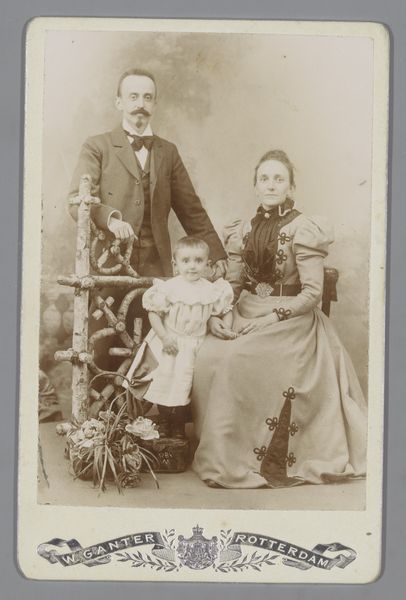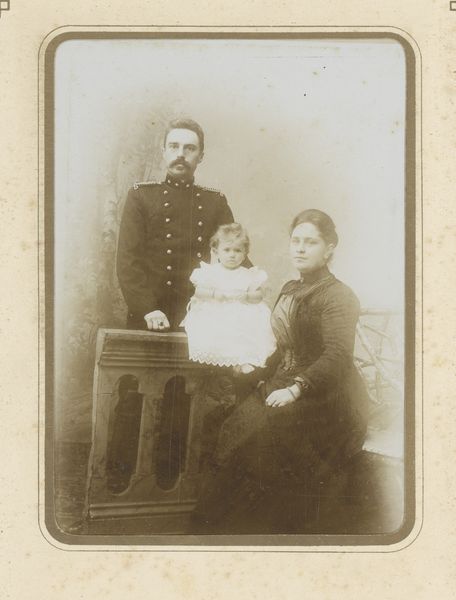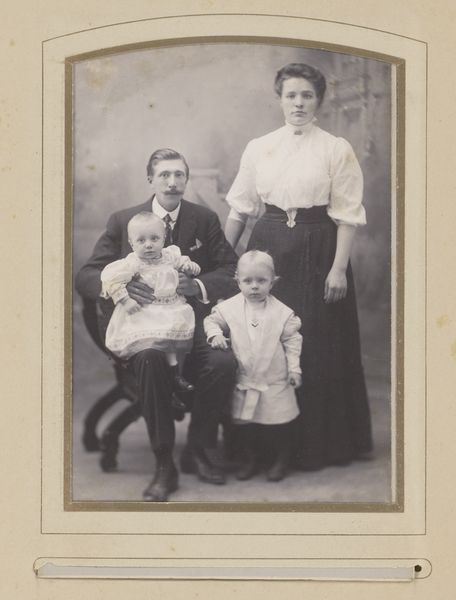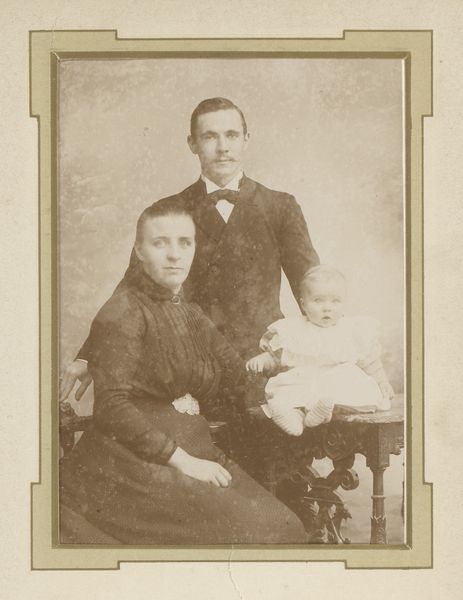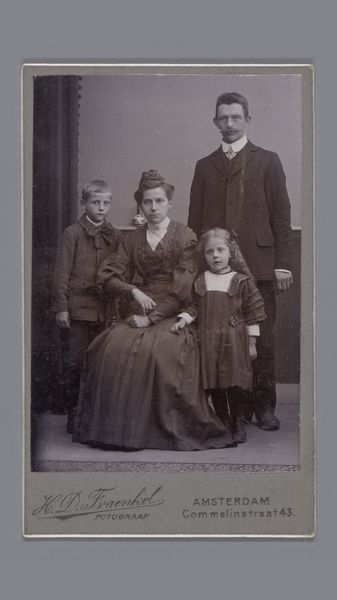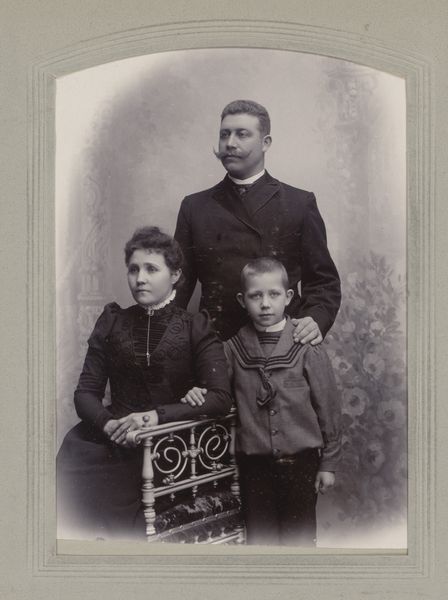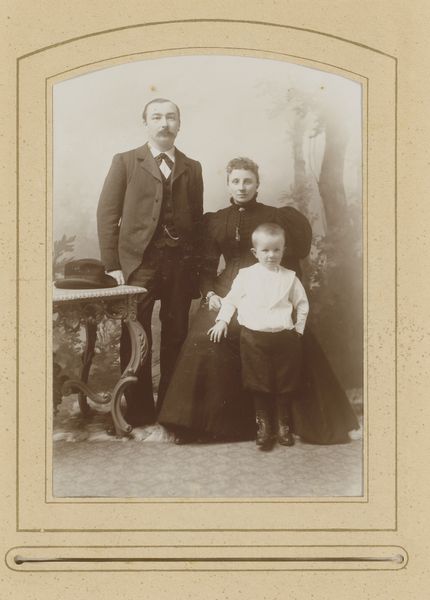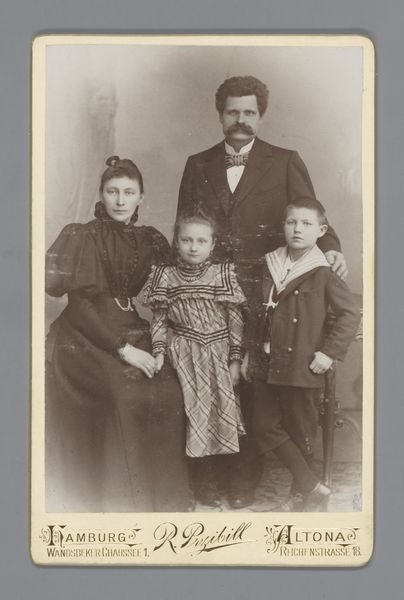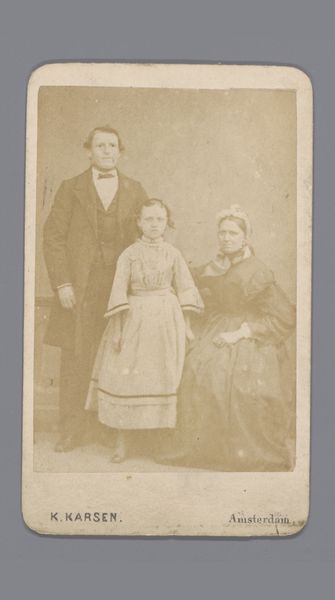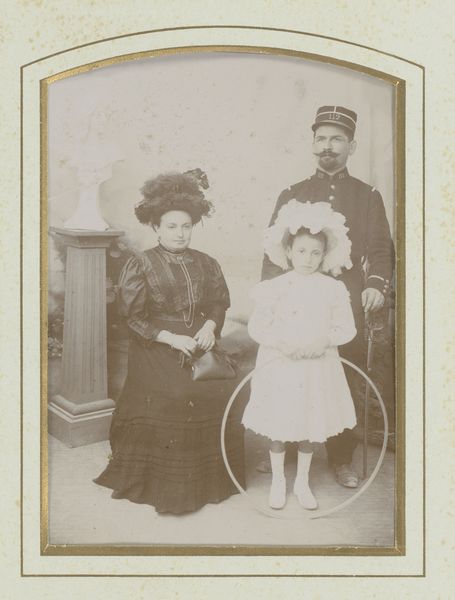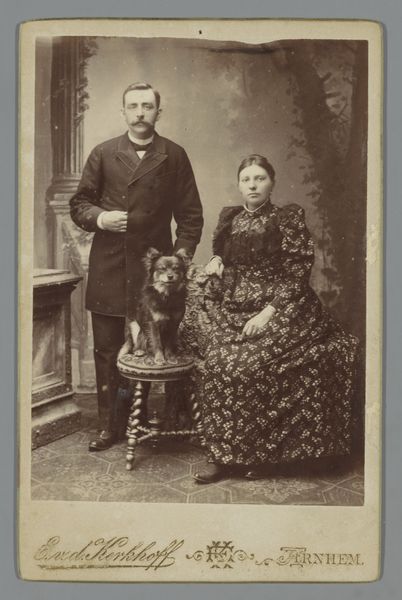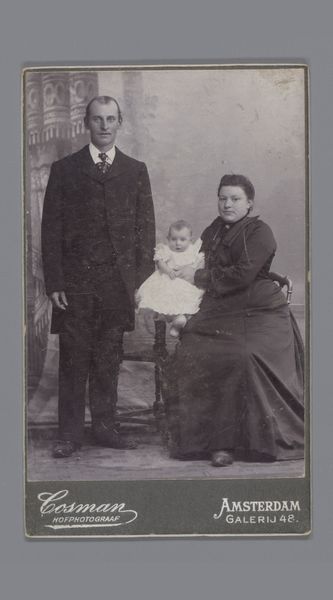
Portret van een onbekende man, vrouw en kind, vermoedelijk een gezin c. 1880 - 1900
0:00
0:00
photography
#
portrait
#
impressionism
#
archive photography
#
photography
#
historical photography
#
historical fashion
#
genre-painting
Dimensions: height 164 mm, width 105 mm
Copyright: Rijks Museum: Open Domain
Editor: So, this is "Portrait of an unknown man, woman, and child, presumably a family," a photograph from around 1880 to 1900, by Nicolas Calphas. The sepia tone gives it such an antique, almost haunting quality. What's your take on this as an image of its time? Curator: It's fascinating how these studio portraits became almost a ritual, a performance of social standing. Consider the rigid poses, the formal attire. Photography, especially portraiture, played a crucial role in shaping and disseminating ideals of family and respectability within the burgeoning middle class. How do you think this image participates in those social narratives? Editor: I see what you mean, like it's about presenting an image, rather than capturing reality. The painted backdrop adds to the artificiality. Does this relate to the rise of a public image in the late 19th century? Curator: Precisely! This isn't just a snapshot; it's a constructed representation designed for public consumption, for relatives to view, and even posterity. Think about the institutions that supported this: photography studios as new commercial enterprises, shaping desires, selling dreams. Notice the photographer's name boldly printed at the bottom. How does this transform a family memory into a public statement? Editor: I guess it's blurring the line between personal and public, a calculated display. So, a seemingly simple family portrait becomes a window into broader social dynamics. Curator: Exactly. And consider the power dynamics – who is represented, how are they represented, and who gets to create that representation? These photographs offer invaluable insights into the social politics of the era, even today. What do you take away from examining it? Editor: That there's a whole social world embedded in what appears, on the surface, as a simple portrait, with constructed realities within. It makes me rethink how we see photos from the past!
Comments
No comments
Be the first to comment and join the conversation on the ultimate creative platform.
